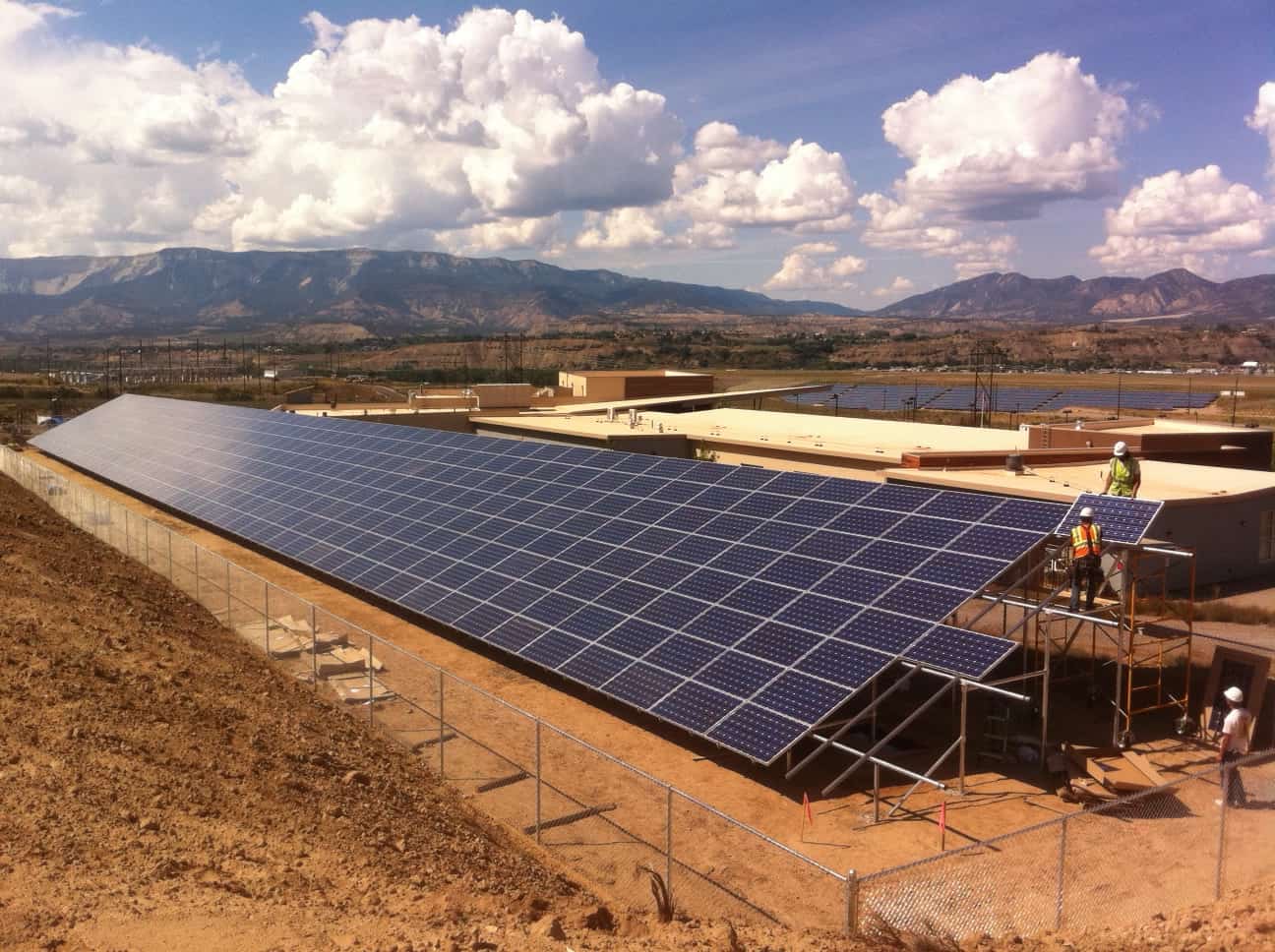Federal Appeals Court Ruling ‘Huge Win’ For Clean Energy
Monday, Jul 20 2015

Chalk one up for clean energy!
In a precedent-setting decision, the Tenth Circuit Court of Appeals has upheld the constitutionality of Colorado’s renewable portfolio standard (RPS), ruling that the state’s RPS does not impose unlawful regulations on out-of-state companies. This was a huge win for the solar and wind industries.
In their written opinion, the judges determined that Colorado’s RPS would not harm interstate commerce.
Current state law requires electric generators to ensure that a percentage of the electricity they sell to Colorado consumers comes from renewable sources. That prompted the Energy and Environment Legal Institute (EELI), which has longtime ties to the coal industry, to file suit in federal court – arguing that out-of-state companies were unfairly and adversely impacted.
The Solar Energy Industries Association (SEIA) and the Interwest Energy Alliance (a regional partner of the American Wind Energy Association (AWEA)) were two of several organizations to intervene on behalf of the Colorado Public Utilities Commission and in support of the state’s RPS.
Because electricity can go anywhere on the grid and come from anywhere on the grid, and because Colorado is a net importer of electricity, the state’s renewable energy mandate became a “target” for people and groups hoping to freeze or rollback RPS programs – not only in Colorado, but also in other states around the nation. By ruling on the substance of the issue, we believe the Tenth Circuit Court of Appeals decision sends a clear signal that renewable energy standards are, in fact, legal under the Constitution’s dormant commerce clause. We applaud the court for its clear guidance.
“This is a landmark day. This ruling affirms the ability of states to choose their own energy future as part of a national framework and interstate commerce,” said Tom Kiernan, CEO of AWEA. “The nation’s 29 renewable energy standards continue to play a important role in diversifying the country’s electricity portfolio’s in order to advance key public policy interests – including protecting consumers against fuel-price risk, improving overall system reliability and creating significant clean air and water benefits such as reducing carbon pollution and conserving fresh water.”
In Colorado, renewable energy leader Interwest Energy Alliance was quick to praise the court’s decision to uphold the law.
"The Court has reaffirmed that Colorado's renewable energy standard is within the state’s constitutional powers," said Sarah Propst, Executive Director of the Interwest Energy Alliance. "The wind and solar industries have responded to Colorado's supportive policy environment by investing over $4.5 billion dollars of private capital in generation projects, manufacturing plants, and supply chain operations. This decision validates Colorado's move toward clean energy."
Interwest’s outside counsel – John Putnam of Kaplan Kirsch & Rockwell – briefed and argued the case in front of the Tenth Circuit panel with Will Allen of the Colorado Attorney General’s Office, Neil Levine for SEIA, Michael Freeman and Michael Hiatt of Earthjustice and Erin Overturf of Western Resource Advocates.
“The Tenth Circuit was very clear that Colorado’s renewable energy standard is fully consistent with the Constitution,” said John Putnam, an attorney from Kaplan Kirsch & Rockwell who argued the case on behalf of Interwest Energy Alliance. “States have the power under our Constitution to develop renewable standards that benefit the economy and environment.”
Colorado was the first state in the U.S. to adopt a renewable energy standard by a popular vote of its citizens. The law has widely benefited the state, as wind power supports up to 7,000 well-paying jobs, including manufacturing jobs at 22 facilities around the state. Wind has attracted $7.8 billion in capital investment to the state’s economy.
The country’s 29 RPSs have created similar success stories across the U.S. by helping to diversify state energy portfolios that directly save consumers money and provide reliable service, as well as rural economic development, water conservation, and pollution reduction benefits.
For example, Hawaii, California, Nevada, Colorado, Minnesota, Connecticut and Oregon all have effective RPS requirements of 25 percent or greater. Solar Industry growth in those seven states has led to more than 72,000 jobs and over $13 billion invested in solar installations in 2014 alone, while new wind farms in these states have attracted over $30 billion in private investment, created over 12,000 jobs there, and are now paying farmers, ranchers and other landowners over $45 million a year to lease sites for turbines.
The Texas renewable standard signed into law by then-Governor George W. Bush was increased in 2005 and met seven years ahead of schedule. Six states – California, Michigan, New York, Minnesota, Illinois and Vermont – are seriously debating an increase in their RPS this year.
What’s it all mean? Despite the best efforts of our opponents, clean energy development continues to be a huge economic driver for America.